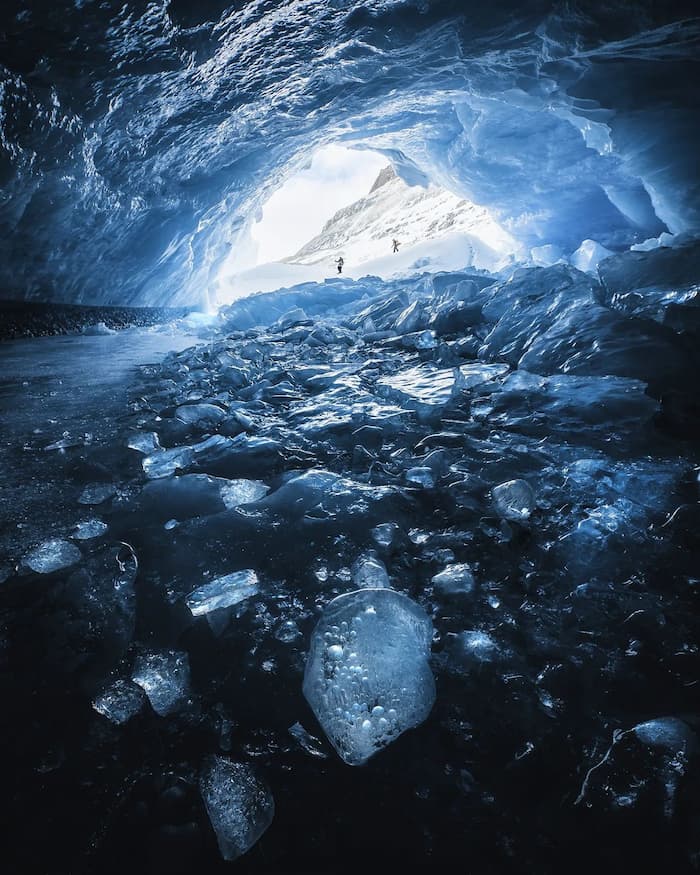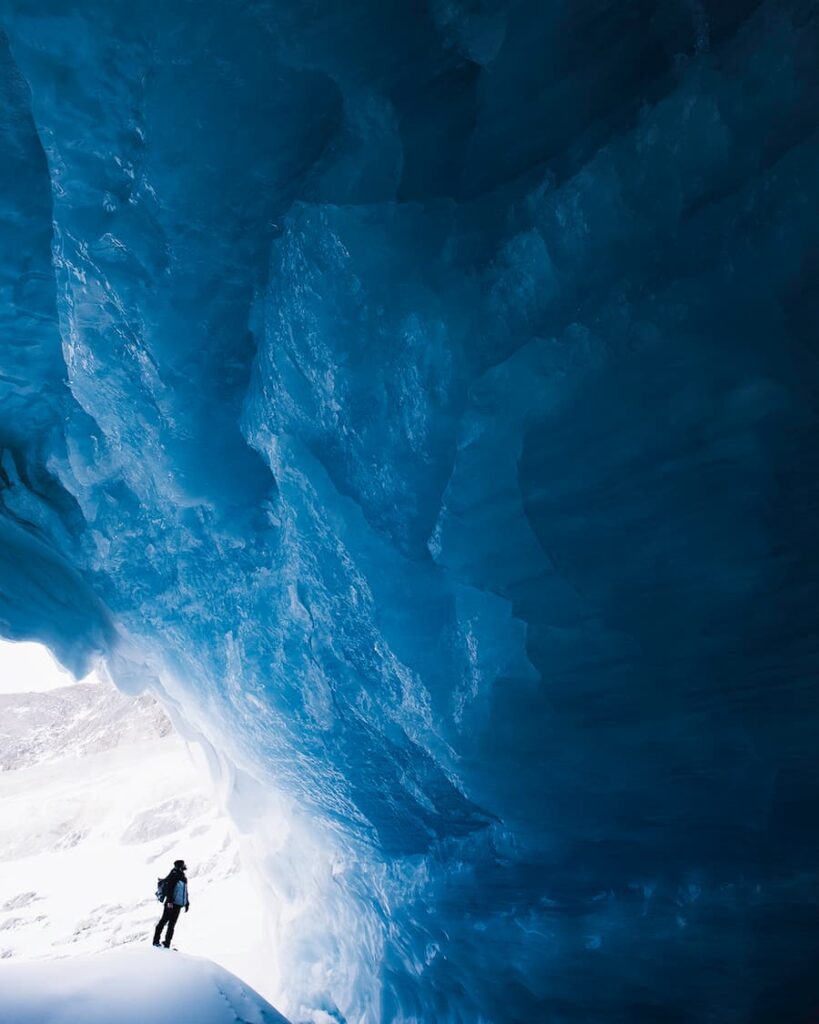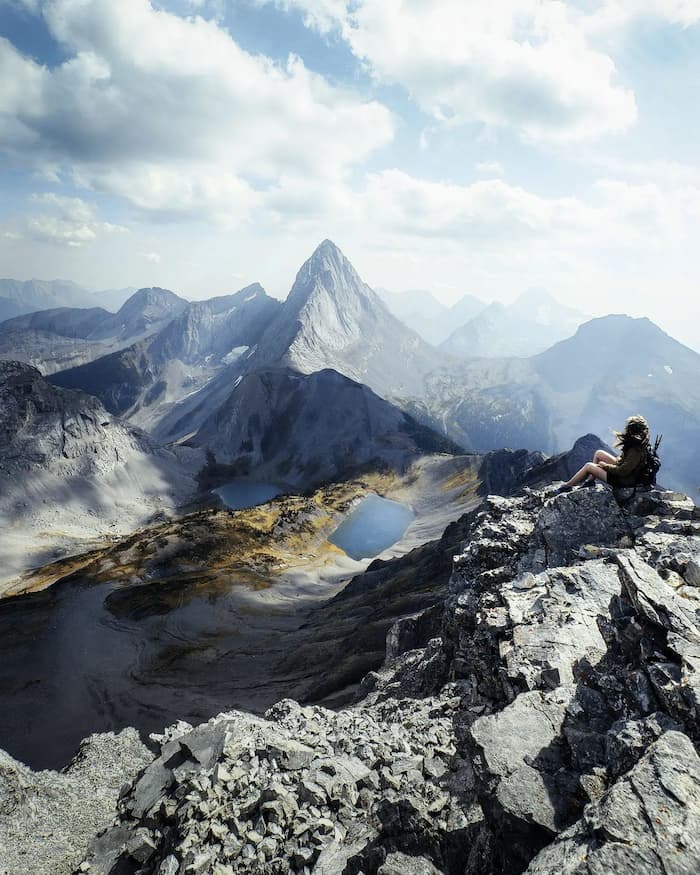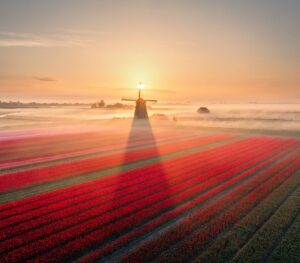
Photo tour in Azores, Portugal
Join us in the Azores for a unique photo tour, where you’ll elevate your creative skills with expert guidance from Ronald Soethje, Bruno Ázera, and Nomadict.
Choosing to relocate to Canada was a tipping point for Archie. He challenged himself in recent years to capture its landscapes in unique ways, and in this article, we learn from his most valuable lessons to this day.
From my early days growing up in England, I developed a profound affection for nature, especially the great outdoors. I have fond memories of exploring the ancient, enchanted forests that dotted the countryside, climbing trees, and feeling as though I was part of a clandestine universe.
During my teenage years, my family relocated to Australia, and I became a member of the Scouts. This opened the door to numerous camping and hiking expeditions, which instilled in me a deep reverence for the natural world. I made it my mission to acquire as much knowledge as possible about the land and how to traverse it with efficiency and respect. Upon completing high school, I felt a strong yearning to immerse myself in an entirely new natural environment, one that would challenge and astound me in novel ways. This led me to take a gap year, which eventually stretched into several years, during which I worked as a youth hiking guide in the Rocky Mountains of Alberta, Canada. This was my first experience with unspoiled mountain wilderness, and I was instantly captivated by the seemingly boundless magnificence of the landscape.
While I had always enjoyed indulging my creativity and taking photos on adventures using my phone, my satisfaction dwindled after a few seasons of guiding. I found that my battered iPhone 6 fell short of truly encapsulating the breathtaking scenes that unfolded before me. In a moment of conviction, I drove into the nearest town and, despite my limited earnings at the time, spent nearly an entire paycheck on a pre-owned Canon 5D mkII and telephoto lens, subsisting on instant noodles for the remainder of the month. This camera has proven to be an unparalleled workhorse, and to this day, it remains my primary gear. It has accompanied me on countless mountainous expeditions (and even plummeted down once!) yet continues to enable me to immortalize extraordinary moments in the outdoors.
In 2018, I obtained my first camera and shortly after, ascended a nearby mountain with a group of newfound companions who shared my love for photography. We embarked on our hike before daybreak, guided by the moon’s light, and settled on an abandoned helipad a brief distance from the summit to erect our tents. The sky was an unobstructed canvas of twinkling stars, and we spent the night capturing images until the wee hours of the morning. I possessed minimal knowledge of how to adjust the camera settings, let alone composing a well-defined astrophoto. However, with the aid of my companions, I managed to produce a fairly satisfactory photograph of our tent under the starlit sky.
Reflecting on it now, the image’s quality elicits a chuckle from me, but I still hold a deep fondness for the sense of accomplishment it brought me. Following a brief two-hour slumber, we emerged from our cozy sleeping bags and persevered towards the summit, arriving just before sunrise. Seated atop the peak, we watched the sky transform through every shade of orange as the sun emerged from behind the opposing mountain ridge, bathing us in its intense rays and thawing our frozen hands.
This particular instant stands out to me as one where I instinctively sensed that I was precisely where I belonged, with the appropriate individuals, at the opportune moment. I was confident that photography would guide me toward a life filled with these moments. Additionally, the kind nature of these newfound friends lingered with me – their ability to sit with me and share their expertise in a patient and positively inspiring manner was inspiring. I felt immediately embraced by the photography community and have solely interacted with wonderful people ever since!
Choosing to relocate to Canada is, without a doubt, the most rewarding decision I have ever made. The stunning beauty of this country never fails to inspire me. In particular, the Rocky Mountains of Alberta provide a photographer’s paradise, offering breathtaking views of rugged mountain peaks and turquoise lakes nestled in valleys. It’s not an exaggeration when I tell visitors that it’s almost impossible to take a bad photo here. Despite the heavy tourist presence in these areas, I have challenged myself in recent years to capture these landscapes in unique ways that haven’t been explored before, and this has played a crucial role in my development as a photographer. In this regard, the following are four valuable lessons I have learned along the way to becoming a better photographer.
1) Show up
Showing up is the first step to success. Even if you’re not feeling your best, it’s important to push yourself to be present and engaged. By being there, you give yourself the opportunity to witness something truly amazing and capture it in your own unique way.
It’s important to remember that success doesn’t come overnight. It takes patience, persistence, and hard work to achieve your goals. Sometimes you’ll have to face setbacks and disappointments, but the key is to keep showing up and putting in the effort.
In addition, being present and engaged can also help you grow as an artist. By showing up and being open to new experiences, you can gain new perspectives and insights that can inform your work.
So, if you’re feeling unmotivated or unsure of yourself, remember the importance of showing up. You never know what opportunities or experiences might be waiting for you. And, as the saying goes, “you miss 100% of the shots you don’t take.”
2) Great photos can be found in any condition.
I once received advice from a friend during a difficult hike in inclement weather: “there are no bad conditions, only bad attitudes.” Although he was joking about hiking, I took this to heart as a photographer. I’ve used this motto to guide my attitude toward photography ever since. Some of my best photos have come from days when I showed up to capture a specific shot, only to find the scene covered in fog or lit in an uninspiring way. On those days, I challenge myself to think outside the box and find an interesting composition or subject. One such example is the photo you can find below. Normally, this alpine lake reflects the surrounding peaks, but on this day, the sky was gray, a mountain was hidden in clouds, and the lake’s surface was rocked by wind and rain. Despite my initial disappointment, I resolved to capture an image I was proud of. I soon found an upturned tree by the lake’s shore and captured this moody shot of the rain-soaked scene. The lesson is to remain open-minded and persistent and to always search for potential in any situation.
3) It’s important not to delete photos because their true potential may not be realized until later.
I store all my RAW files on an ever-growing stack of hard drives. While managing all this storage can sometimes be a headache, it allows me to revisit old shoots with a fresh eye years later. I’m amazed at the number of times I’ve come across a treasure trove of shots that I completely disregarded at the time. Sometimes, revisiting a set of images with a few more years of learning under your belt can be a game-changer. New editing techniques can completely change your understanding of an image’s potential.
4) Continual learning is crucial for long-term success and enjoyment of your craft.
Whenever I feel stuck in an uninspired, creative rut, the one thing that always helps is seeking out and learning new techniques and knowledge. When you learn something new, the first thing you want to do is get out and use it!
Learning creates excitement, and excitement creates action. Before you know it, you’re back to doing what you love with a renewed passion! We live in an age with an abundance of free, high-quality information that’s easily accessible. It’s never been easier to grow your skill set.
One of my all-time favorite photos is a shot I took from the back of an ice cave deep within a massive glacier in the Rockies. This place had an incredible atmosphere, and I felt a profound sense of awe being in such a raw, elemental environment. I wanted to capture this feeling as best I could. We embarked on this mission in the early hours of the morning, long before sunrise, as the approach was a 10km snowshoe across a snow-filled valley. This gave us ample time to explore and photograph the cave during peak daylight hours, allowing as much light as possible to enter the mouth of the cave and illuminate the icy treasures within. To add scale to the image and convey the cave’s immense size, I used some bubble-filled ice shards in the foreground and the silhouettes of my team arriving at the entrance. I also set my shutter speed low to create areas of shadow wherever daylight didn’t reach, producing contrast and capturing the dreamy, otherworldly atmosphere of the ice formations.

Creating a great landscape photo can be a challenging task, but four key ingredients can help bring the image to life: contrast, color, scale, and atmosphere.
Firstly, contrast is essential because it creates visual interest and helps the viewer distinguish between different elements in the photo. This can include the contrast between light and dark areas, as well as the contrast between different textures or shapes. Contrast can add depth and dimension to the image, making it more dynamic and engaging.
Secondly, color is another crucial ingredient in a great landscape photo. Different colors can evoke different emotions and moods, and using the right combination of colors can help create a sense of harmony or tension within the image. For example, a photo of a sunset over a calm ocean may feature warm, golden tones that create a peaceful and serene atmosphere.

Thirdly, scale is important in landscape photography because it helps convey the size and grandeur of the scene. Including a human figure, for example, can provide a sense of scale and help the viewer understand the magnitude of the landscape. Additionally, using foreground elements such as rocks, trees, or flowers can help create a sense of depth and perspective within the image.
Lastly, the atmosphere is an important ingredient in creating a memorable landscape photo. This can include the weather conditions, such as mist, fog, or rain, which can add a moody or dramatic element to the photo. Additionally, the time of day can also impact the atmosphere, as the light and shadows cast by the sun can create a unique and compelling image.
By combining these four ingredients, photographers can create landscape photos that are not only visually stunning but also capture the essence and emotion of the scene.

This photo also holds a special place in my heart as it was the result of a lot of effort. A few years earlier, I came across a breathtaking shot captured from the summit of the peak that features twin lakes surrounded by vibrant foliage, with the jagged Mt. Birdwood in the background. I was determined to experience it firsthand and capture my own image of the stunning natural scenery. I convinced my friend to join me and we embarked on our adventure on a sunny summer afternoon. However, the weather had other plans for us, and a sudden blizzard hit us while we were close to reaching the summit. We were ill-prepared for the weather, dressed in shorts and t-shirts, and after a short huddle behind a boulder, we made the difficult decision to turn back. It was a tough call to make, especially after coming so close to our goal, but it was the right one as small mistakes in the backcountry can have severe consequences.
After two years of waiting for the right conditions, I finally had the opportunity to climb the summit again. This time, luck was on my side and the weather was good, although I had made sure to bring extra layers just in case. Standing on the summit, feeling the wind blowing past me, and seeing the view that had eluded me for so long was an incredibly satisfying moment. I took many photos of the breathtaking scenery and was just about to pack up my camera when I noticed my friend Samantha a little further down the ridge. Without hesitation, I snapped a candid shot, and it turned out to be a great composition and moment. When I got back home and reviewed the photo, I was thrilled with the result. The rocky ridgeline in the foreground creates a leading line that draws the viewer’s eye to Sam, whose gaze then leads to the stunning landscape below, illuminated dramatically by a break in the clouds.
1) I added blues to the shadows to complement the vibrant earthy foliage in the photo. This helped to create a more balanced and cohesive color palette throughout the image.
2) To enhance the leading lines in the photo, I added contrast to the rock in the bottom right corner. This helped to draw the viewer’s eye toward the main subject of the image.
3) By increasing the contrast in the valley, I was able to separate patches of light from shadow, which helped to create more depth and dimension in the photo.
4) To make the subject stand out from the background and to create a more dramatic effect, I increased the exposure slightly from the right side, where the light source was coming from. This helped to make the light catching her hair ‘pop’.
5) Lastly, to create a more defined and impactful image, I sharpened all objects along the main leading line of the image, including the foreground rocks, subject, and lakes/mountains. They also softened everywhere else slightly to produce the desired outcome.
When editing my images, I aim to transport the viewer into the moment the image was captured, as though they were experiencing it with me. To achieve this, I always shoot in RAW, allowing the camera to capture intricate details and data. However, the resulting image may appear lackluster without post-processing, often failing to convey the atmosphere of the original moment. To enliven the image, I focus on three main elements: creating a harmonious blend of tones and complementary colors, using contrast to add depth to the scene, and utilizing exposure/shadow filters to enhance the natural lighting. Throughout the editing process, I frequently refer back to the original file to ensure that the image remains grounded in reality. I firmly believe in maintaining a delicate balance when enhancing an image’s natural beauty, as going too far may create an uncanny effect that the viewer may not be able to articulate, but will sense on a subconscious level. I strive to push this boundary as much as possible, producing visuals that spark the imagination while remaining grounded in reality, in the hopes of encouraging others to discover their magical scenes in nature, particularly in mountain photography.
Move RIGHT or LEFT to compare
The last image I would like to share with you, one of my personal favorites, was captured purely by chance. As with many of my best shots, it was entirely unplanned.
On this particular day, I joined a group of photographers on a hike through a frozen canyon, intending to reach a cave at the far end. This cave was renowned for a rare winter occurrence called “ice spikes.” It was during this journey that I stumbled upon the perfect moment to capture the image that has become a cherished favorite of mine.
After completing our mission, we began our hike back through the canyon, taking in the beauty of a striking ice waterfall along the way. Upon reaching the trailhead and unloading our gear, my friend Hayley (@hayleywasylycia) mentioned that she had her ice-climbing equipment in her car and had been captivated by the waterfall ever since we passed it. She proposed the idea of a night climb to end the day. While half of our group had plans to stop at a nearby pub for a hot meal and a cold pint, Hayley’s contagious excitement swayed me, and we ventured back into the icy canyon walls.
As the only other person in our group with climbing experience, my biggest challenge during this shoot was taking on the responsibility of belaying Hayley’s climb. This meant that I had to set up my entire shot before she began ascending. I balanced my tripod on a slippery sheet of pure ice, calculated my shutter speed, and chose a focus point that I hoped would align with Hayley’s ascent. Once she began climbing, I was on the rope and the shot was entirely out of my control. I had to rely on my friends on the sidelines to occasionally hit the shutter button while they took their shots. Any small bump of the tripod on the slick ice could have ruined the entire shot, making it a nerve-wracking experience. Despite my fears, everything went as smoothly as possible, and the striking image I captured is one of my proudest achievements to date.

Join us in the Azores for a unique photo tour, where you’ll elevate your creative skills with expert guidance from Ronald Soethje, Bruno Ázera, and Nomadict.

In this article, Forest shares how years of chasing scale, silence, and raw landscapes shaped his approach to photography, from the deserts of Kazakhstan to the volcanic ridges of Iceland. He talks about how he uses light, texture, and vast negative space to create images that feel both intimate and overwhelming.

Simon shares the journey behind his photography, from early inspirations to field techniques, editing, and the story of the winning shot that shaped his path.

In this article, Miro shares how his love for cinematic music evolved into a deep passion for photography and how he uses light, color, and atmosphere to turn the streets of Prague into living film scenes.

In this article, Stefanie reveals how her background in physics sparked her passion for astrophotography and how she blends science with creativity to capture the beauty of the night sky. Readers will discover her approach to color, contrast, and editing, as well as her aurora photography workflow.

Spanish photographer Yhabril captures the profound connection between humans and the mountains that shaped him. Growing up in the Pyrenees, his work bridges outdoor sports, landscapes, and celestial scenes — often blending athletes, moonlight, and wilderness into striking visual stories.

In this article, Ariane shares how photography helped her navigate personal challenges, connect authentically with people and animals, and develop a philosophy rooted in empathy and artistic freedom. Readers will also discover her ethical approach to wildlife photography and her trusted equipment for both camouflage techniques and cameras.

Discover how to photograph Dutch tulip fields in their most magical light. From choosing the right gear and lenses to mastering composition, color, and aerial perspectives, this guide shares creative techniques to capture the beauty of the Netherlands’ tulips. Learn how light, color grading, and proportion bring emotion into every frame.
